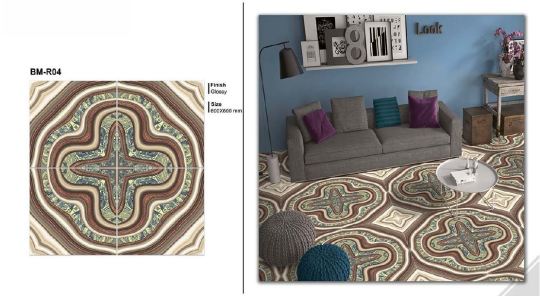Text
repetitive questions about ceramic tiles here are answered
many people have lots of questions before buying ceramic and we check lots of them and gather them. in this article, repetitive questions about ceramic tiles will be answered. We try to help you know better about ceramics. Stay with us
Finding the perfect floor for your home, which you have always dreamed of, and which has been decorating your entire home for years, can seem like a challenge. It is not easy to decide on the best material based on its technical and aesthetic characteristics.
To help you, in this article we want to solve all your doubts about ceramics. With that in mind, we will answer the five most common questions our customers ask us about ceramic tiles.
1- What is the difference between porcelain and porcelain?
One of the main doubts about ceramic tile is whether it is the same as porcelain. Do they have the same characteristics? What's the difference between them?
Since they are similar, these two substances are spoken of as being the same and this can be very confusing. But they are different, and we explain why:
Porcelain stoneware is pressed at a higher pressure and fired at a higher temperature, which makes it a denser product and, consequently, more resistant and durable. This is why they are ideal for installation as internal or external flooring.
Ceramic tiles are more porous, so their water absorption is greater than porcelain. This allows for better installation on vertical walls, facilitating the installation of the mortar, but taking it for use outdoors (terraces, facades, etc.), where it can absorb rainwater and immediately fracture the gel. For this reason, porcelain is the most recommended material for outdoor use.
Porcelain stoneware is difficult to cut and drill through during installation and use. To cut porcelain stoneware you need to have a special blade of a special blade.
As for the models available, although both offer a variety of models, the variety of forms of porcelain is greater, which is greater than in the case of ceramics.
2- What is the PEI for ceramic tiles?
PEI stands for Porcelain Enamel Institute and is a scale that ceramics based on their resistance to surface abrasion.
The PEI of the ceramic is measured by performing an abrasive load on the top of the material to verify the level of wear. Depending on the result, they are divided into grades from 0 to 5. The higher the PEI, the greater the resistance of the tile to abrasion.
PEI 0: Tiles of this specification are not suitable for flooring but are suitable for wall cladding.
PEI 1: The reduction is low, but this rating is valid for low-traffic areas, such as home bathrooms.
PEI 2: With a little more stiffness, it is ideal for areas of the house that are away from the outside. For example, for the bedroom.
PEI 3: This resistor is suitable for use in residential areas with little traffic, such as the living room or kitchen.
PEI 4: Commercial environments should not have a PEI of less than 4. This resistance is suitable for residential environments with many businesses or commercial spaces with little activity.
PEI 5: The perfect choice for outdoors and also for commercial environments with a large and huge number of people.
As you have seen, PEI is something to consider when choosing a refractory floor for the different areas of your home.
1 note
·
View note
